By Elaine Viets

Feeling discouraged, writers? Tired of papering your walls with rejection slips?
When I feel down, I turn to the good book. Not THE good book, but a good book by Elaine Borish called “Unpublishable! Rejected writers from Jane Austen to Zane Grey.”
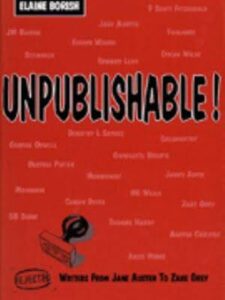
If you’ve been rebuffed by a publisher, you’re in good company. So was Agatha Christie. Borish says it took Dame Agatha four years to find a publisher for her first novel, “The Mysterious Affair at Styles” – and then it sat on a desk for another eighteen months. The publisher suggested some changes to the ending, and Agatha made them. Belgian detective Hercule Poirot finally made his debut in 1920.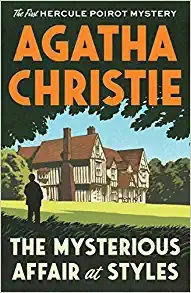
Agatha Christie wrote more than ninety titles, and “The Mysterious Affair at Styles” is still in print.
Beatrix Potter, the creator of Peter Rabbit and Flopsy, Mopsy and Cottontail, was a hybrid author. Her “Peter Rabbit” was rejected by six publishers. She used black-and-white sketches, since she was worried that color pictures would make the book too expensive for children. Beatrix finally self-published “Peter Rabbit.” It went through two printings.
In 1901, Beatrix submitted Peter Rabbit again, and the traditional publisher politely rejected it: “As it is too late to produce a book for this season, we think it best to decline your kind offer at any rate for this year.”
The next time Beatrix submitted the book, she had color illustrations. The first edition sold out before the 1902 publication. By 1903, sales were multiplying like, well . . . rabbits. She’d sold 50,000 copies, and lived hoppily ever after.
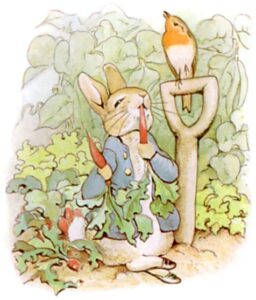
Dorothy L. Sayers’ books were definitely not for children. “Whose Body?,” the first mystery by the rebellious Oxford scholar, was rejected by several UK publishers for “coarseness” in 1920. Today, the risque parts wouldn’t raise an eyebrow. The novel opened this way:
“Oh, damn!” said Lord Peter Wimsey.
Besides that four-letter word, Dorothy L.’s first book is about the disappearance of a Jewish financier, Sir Reuben Levy. Borish tells us, “When a naked corpse turns up in a bath, Inspector Sugg is eager to identify him as Levy.” Lord Peter says it can’t be “by the evidence of my own eyes.”
And the evidence? The body was (gasp) uncircumcised.
Dorothy L., desperate for money, revised her story, making sure the body could not be mistaken for a rich man. The deceased had “callused hands, blistered feet, decayed teeth” and more. An American publisher bought “Whose Body?” It was published in New York in 1923, and Dorothy was on the way to fame and fortune. Borish writes, rather gleefully, “consider the last words spoken by Lord Peter in the last novel: ‘Oh damn!’”
 George Orwell had his masterpiece, “Animal Farm,” turned down by no less than T. S. Eliot, a big deal at UK publishers Faber and Faber. Like many in the upper echelons of publishing, Eliot missed the point when he rejected Orwell: “Your pigs are far more intelligent than the other animals, and therefore the best qualified to run the farm . . . What was needed (someone might argue) was not more communism but more public-spirited pigs.”
George Orwell had his masterpiece, “Animal Farm,” turned down by no less than T. S. Eliot, a big deal at UK publishers Faber and Faber. Like many in the upper echelons of publishing, Eliot missed the point when he rejected Orwell: “Your pigs are far more intelligent than the other animals, and therefore the best qualified to run the farm . . . What was needed (someone might argue) was not more communism but more public-spirited pigs.”
Another publisher, Fredric Warburg, took the book and paid Orwell a hundred pounds. Orwell had the last laugh – Borish says the book sold 25,000 hardcovers in the first five years.
Anthony “A Clockwork Orange” Burgess had a novel about his grammar school experience – “The Worm and the Ring” – rejected because it was “too Catholic and too guilt-ridden.”
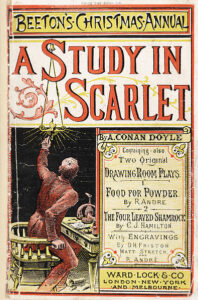 Publishers outdid themselves with boneheaded reasons to reject bestsellers. Conan Doyle’s first Sherlock Holmes novel, “A Study in Scarlet,” was turned down by the prestigious Cornhill magazine because it was too much like the other “shilling shockers” already on the market. The editor said it was too long “and would require an entire issue” – but it was “too short for a single story.” Another publisher sent the manuscript back unread. A third bought the rights for a measly twenty-five pounds, and let it sit around for year. It was published in 1887, and then brought out as a book, but Conan Doyle didn’t get any money from that because he’d sold the rights. Worse, the book was pirated in the U.S. Doyle wrote a couple of historical fiction works. Then an American editor, looking for UK talent, had dinner with Doyle and Oscar Wilde and signed them both up. Wilde wrote “The Picture of Dorian Gray” and Doyle did “The Sign of the Four.”
Publishers outdid themselves with boneheaded reasons to reject bestsellers. Conan Doyle’s first Sherlock Holmes novel, “A Study in Scarlet,” was turned down by the prestigious Cornhill magazine because it was too much like the other “shilling shockers” already on the market. The editor said it was too long “and would require an entire issue” – but it was “too short for a single story.” Another publisher sent the manuscript back unread. A third bought the rights for a measly twenty-five pounds, and let it sit around for year. It was published in 1887, and then brought out as a book, but Conan Doyle didn’t get any money from that because he’d sold the rights. Worse, the book was pirated in the U.S. Doyle wrote a couple of historical fiction works. Then an American editor, looking for UK talent, had dinner with Doyle and Oscar Wilde and signed them both up. Wilde wrote “The Picture of Dorian Gray” and Doyle did “The Sign of the Four.”
These writers endured humiliation, insults, swindles – and in many cases, poverty – and still went on to write books that are read today.
Orwell talked about an embittered Russian who said, “Writing is bosh. There is only one way to make money at writing, and that is to marry the publisher’s daughter.”
Obviously, we writers have to pay attention to rejections sometimes. My agent gave me a good rule of thumb: “If you get the same reason for rejection repeatedly – your plot isn’t twisty enough, or you have too many secondary characters – it’s time to pay attention.”
How many times have you ignored rejections?
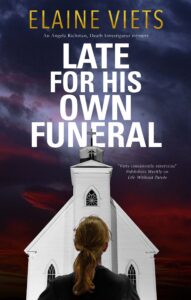 Kings River Life says “Late for His Own Funeral” is “a fascinating exploration of sex workers, high society, and the ways in which they feed off of one another.” Buy my new Angela Richman, Death Investigator mystery here. https://tinyurl.com/4dn2ydfd
Kings River Life says “Late for His Own Funeral” is “a fascinating exploration of sex workers, high society, and the ways in which they feed off of one another.” Buy my new Angela Richman, Death Investigator mystery here. https://tinyurl.com/4dn2ydfd

Elaine, great stories about authors who got the last laugh.
I can’t swear this is true but the best story I ever heard concerned an editor at a conf. who was followed into the restroom by an overeager writer. The writer handed the manuscript under the stall door. A few minutes later, one page was passed back with the scrawled message: “Thank you for submitting your manuscript. It has met my needs at this time.”
Great story, Debbie. If it isn’t true, it should be.
My “favorite” rejection letter:
“We did review your proposal, and for some reason we don’t feel we can represent it. Some of them come close, and yours may well be one of those, but we do have our reasons for declining.”
Good grief. They did you a favor by rejecting your work.
My publisher never rejects me, even though he’s somewhat mercurial.
My favorite example of a misguided rejection letter is the one sent to Tony Hillerman at the very start of his career: “If you insist on rewriting this, get rid of all that Indian stuff.”
Good one.
I ignored zero rejections – for reasons that seemed compelling at the time I chose independent publishing directly for my initial book and the subsequent three in the series. Though it’s moot I sometimes wonder about the path not pursued/taken. I’m a wimp regards rejection.
Timely mention of your most recent book I had the pleasure of reading “Late to his own Funeral” last week. Compelling characters and fascinating interplay in multiple arenas – especially impressed with the varied, credible personnel and dynamics within law enforcement, the phone-sex workers, and the community “elite”…felt authentic and was incisive yet also funny and Angela is a winning protag.
Thanks!
And thank you, Tom. Glad you liked Angela’s latest adventure.
Inspiring post, Elaine! It’s a great morale booster to read some the rejections even world-famous writers have faced.
I’m self-published, so I don’t face that sort of rejection. When I was submitting short fiction to the science fiction and fantasy markets, I did face it. Generally, resubmit it right away was the best solution, and continue writing the next story.
I recently published a short story collection, Rules Concerning Earthlight, which contains ten stories, three which were collaborations with my late friend K.C. Ball. A novella we co-wrote was the only in the collection not published.
“Silver City” was a heart-breaker–at 16K words it was too long for the markets (at least, for two relative unknowns in 2011). We cut in down to 10K, reworking it extensively getting a rejection from one prominent market which asked to see a further rewrite. That was also rejected. So, I was very pleased to finally be able to the original version of “Silver City” a home at long last.
I feel your pain, Dale. I’ve rewritten a work three times only to have it rejected again. From now on, I follow the Hollywood screenwriters’ rules: one rewrite and then you get paid.
My favorite rejection letters are the ones Snoopy receives in the Peanuts cartoons. JSB posted one of these a while back where Snoopy is atop his doghouse reading a letter.
“Dear contributor,
Thank you for submitting your story to our magazine.
To save time, we are enclosing two rejection slips …
… one for this story and one for the next story you send us.”
Nowadays, most publishers “save time” by failing to respond to the query at all.
Sad but true.
Love it!
https://www.gutenberg.org/files/4261/4261-h/4261-h.htm#link2H_4_0012
Yep, he’s in the book, too.
Thanks for the inspiration, Elaine
Like the self-published writers above, I have chosen the indie route and have not regretted it.
Thanks for your examples and stories of wildly crazy rejections from the past. They help remind me of the determination to continue improving and to strive for excellence.
Have a rejection-free day!
Writers need tough hides, Steve, indie or trad pubbed.
You can always work it into your next story. Obnoxious people make great characters.
I got a pretty awful slam from a trad published author I knew in junior college way back in the sixties.
My crime? I suggested that JSB had written a pretty good guide to writing pulp fiction. She called it mansplaining, whatever that is.
Great way to solicit a new editing client.
I worked it into a short story.
The Pulp Jungle by Frank Gruber is a pretty good read about the struggle to get published. And, you can get it for free on the internet archive.
https://archive.org/details/gruber-frank-the-pulp-jungle-1967
Don’t get mad, get even, even if only you get to see it.
Revel in the idea that for the object of your disaffection there is an anonymous person out in their karma that detests them.
So true. And writers always have the last word.
Thanks for this, Elaine. Makes me feel like I might just have a chance . . .
I haven’t had the privilege of receiving a rejection letter from an editor or publisher.
But I did get one from the first agent I pursued . . . she had my novel for about 18 months.
I liked her rejection notice. Somehow she made me feel good about it. Here’s an excerpt:
The question that I’ve wrestled with all this time was whether or not I could place such a unique story on your behalf and I haven’t been able to answer that question. Without an answer at this point, that’s the sign that I need to step back and let you pursue other options.
My story is “unique”, and she assumes I have other options.
Has a ring to it, yes? 🙂 🙂
Argghhh! You don’t need that ninny representing you.